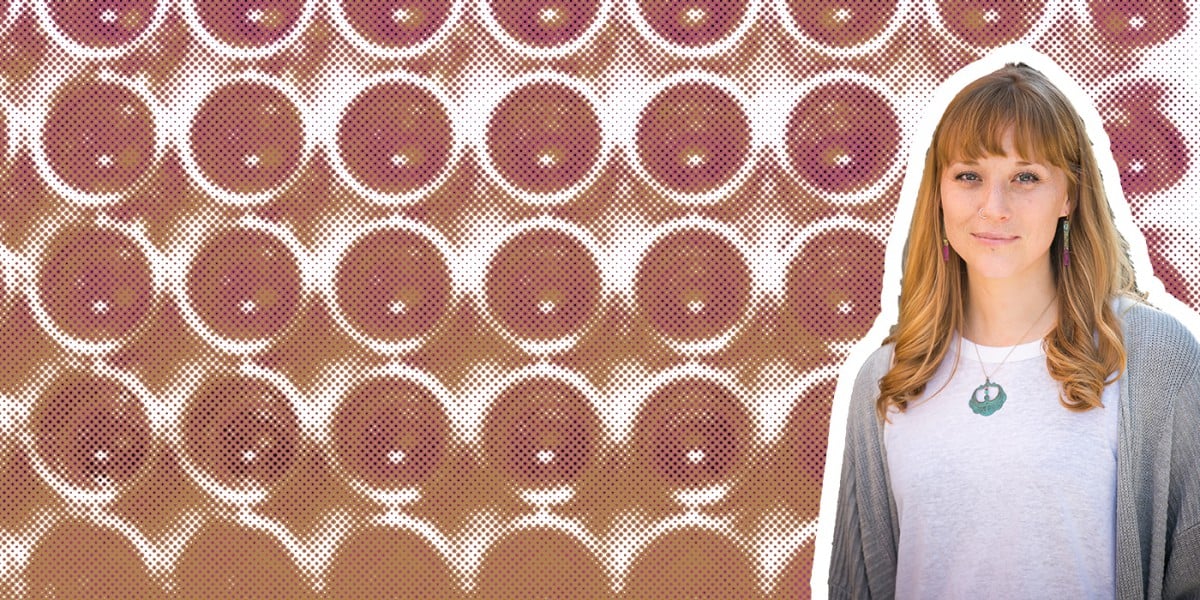UPSIDE Foods’ Dr. Jessica Joslin is creating the future of food, one assay at a time

This interview has been excerpted from the GFI series “Pioneers of the Future of Food.” We profiled some of the trailblazing scientists and engineers building a sustainable food system. Explore the full series here.
As a chemist with a background in analytical, physical, and materials chemistry, Dr. Jessica Joslin has always been interested in applying her expertise to ameliorate pressing environmental, human health, and animal welfare concerns. Before coming to UPSIDE Foods in January of 2018, Joslin worked on projects ranging from analyzing biomaterials to developing water treatment technologies. As the analytical development scientist at UPSIDE Foods, she works to characterize cell-based meat to aid in the company’s product development.
Waverly: How did you initially learn about the clean meat and plant-based animal product field? What piqued your interest in working in it?
Jessica: I have been aware of some of the challenges facing modern meat production for a long time, but it wasn’t until 2016 when I first learned about meat grown from animal cells. I remember receiving a post about The Good Food Institute when it launched. I immediately was fascinated with the idea that there could be a way to address some of the challenges of animal agriculture that would allow people to “have their meat and eat it too!” — but without the undesirable environmental, health, and animal welfare issues. Aside from being interested from an animal welfare perspective, I also was immediately intrigued by the science. My background is in chemistry and at the time I was just out of grad school and involved in some mammalian cell culture projects. The thought of growing animal cells to make meat was so fascinating! I knew right away that I needed to be involved.
How do your previous work and research experiences inform the way you approach your work for UPSIDE Foods?
My interest in science has always been application-oriented. I care a lot about the environment, people, and animals and have always wanted to apply my scientific interests to improve the world. In grad school, I worked in a group developing biomimetic materials to improve patient outcomes, and then with a startup company in Fort Collins working on an aqueous plasma reactor technology for water treatment and other therapeutic applications. I learned a lot about how to apply core scientific principles and processes to understand systems in order to better optimize them for different applications. I love investigating new fields and attempting things that have never been done before. This experience translated well to the work I am currently doing with UPSIDE Foods, where I develop analytical assays to better characterize the meat that we are making, with the goal of making the most delicious and sustainable meat that we can.
What makes your work with UPSIDE Foods distinct from your previous research experience? What aspect of your current research have you found to be the most fascinating?
My work at UPSIDE Foods has connected with me on a much deeper emotional level than any of my previous work — the thought that a single field could truly change the planet in so many positive ways across human health, environmental sustainability, and animal welfare makes me so pumped! Aside from this work aligning the most with my true passions, I have enjoyed the opportunity to apply assays in a unique way and to think about meat in a way that hasn’t been done before. It is so fun and inspiring to be a part of a revolutionary field that gets so many people from different walks of life excited and united.
What is the biggest obstacle you have encountered in product development or another aspect of your work? How does your expertise in chemistry aid you in the troubleshooting process?
It has been fun and challenging to consider how people think about meat. How do we define our process to make the most delicious meat possible? I operate at a fun intersection between conventional meat science and tissue engineering. We are applying conventional assays as well as completely new assays that have never been used before to characterize meat. The scientific process has been key to this, especially my background as an analytical scientist. I have had to be creative in previous roles when analyzing complex, multiphase systems and using those results to optimize the platform — and the same is true of what I am doing now. An understanding of assay sensitivity, selectivity, feasibility, cost, and scope is critical as I establish, troubleshoot, modify, and validate various assays to better characterize our product.
What do you consider to be the most rewarding aspect of your work?
As I’ve mentioned already, the ability to be involved in such cool science is so rewarding. Even more important, though, is the fact that this work has such potential to revolutionize the health of the planet, people, and animals. A few years ago, the challenge of feeding over 9 billion people by 2050 seemed insurmountable. Now that this movement has gained such traction and is exploding in the public eye, people are truly rooting for this to become a reality. It is so encouraging to think that someday we really could change the trajectory of how meat is made. To think of people getting delicious food in a more sustainable way is what inspires me the most every day!
This interview has been lightly edited and condensed. Read the full interview and find more conversations with groundbreaking scientists here.

